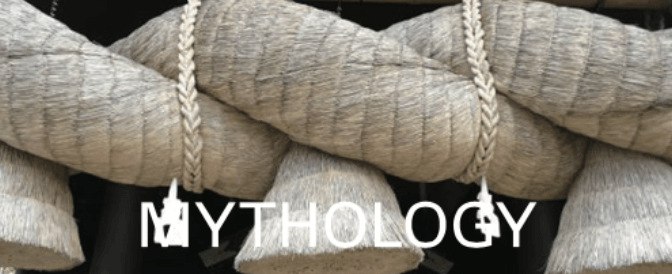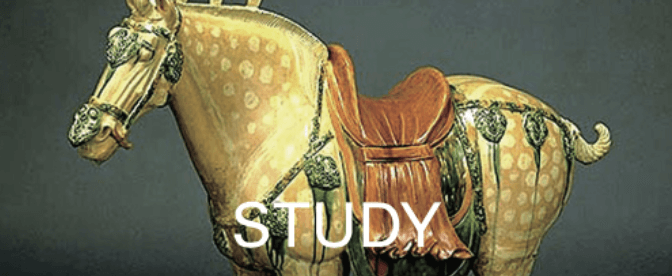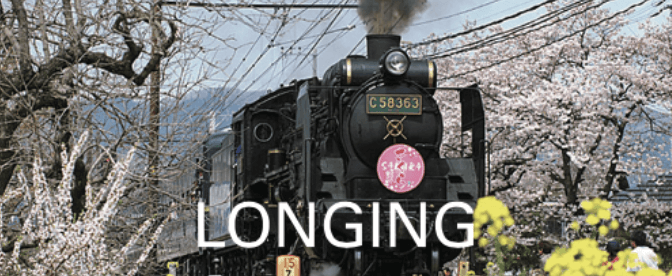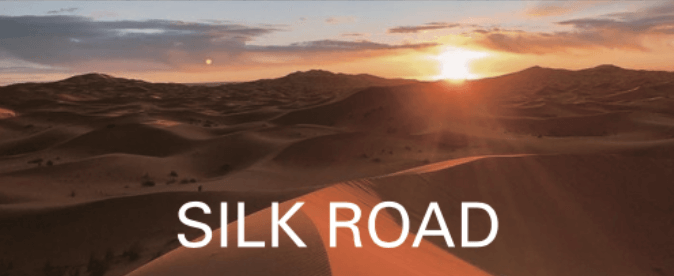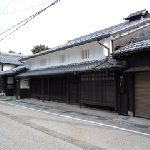
Kashiwabara post town is the sixtieth of the Sixty-nine stops on the Nakasendo, the route connecting Kyoto and Edo in the Edo period, which is 21 ri, (a Japanese unit of distance) or 90 km to Kyoto and was the border of the gold standard in Edo and the silver standard in Kyoto.
Utagawa Hiroshige (1797 – 1858) was an artist of Japanese ukiyo-e, who painted city pleasure and travel with woodblock prints and painting. He painted a long established store, Ibukido, at this post town, in the series of the Nakasendo Ukiyoe, Japanese woodblock prints, at the end of the Edo period (1603 – 1868).
A well-known product was Ibuki mogusa, a moxa used for healing, which had a reputation as far as Edo. The townscape still conveys the taste of those days with pillars, rafters, beams, etc., which are painted using Bengala, red iron oxide.
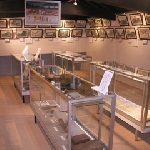
Ibuki mogusa, a moxa used for healing, was a well-known product of Ibukido at Kashiwabara post town on the Nakasendo Road. It was sold all over the city in the Edo period (1603 – 1868) and had a reputation as far as Edo.
This museum’s building was built in 1918 as the residence of Matsuura Kyuichiro, a member of the family that founded Ibukido, a long established store, which conveys the prosperity of the sixtieth post town on the Nakasendo, the route connecting Kyoto and Edo in the Edo period.
You can also enjoy Kashiwara Gozen, a meal, at its Japanese style salon (with a reservation) which evokes the memory of Hatago, an inn during the Edo period.
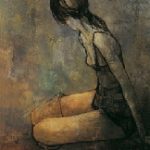
This museum possesses over 700 works of oil paint, watercolors, and drawings by the masters of the painting circle in France. Jan Jansen (1920 – 2013), a French-Armenian painter, introduces the collection. Jansen is highly regarded around the world for his outstanding drawing technique.
He was born as an Armenian in the early 20th century, but during his childhood, he migrated to France through Greece. And he became a writer who can draw the true character of human beings in their harsh destiny. His works are always full of warm eyes.
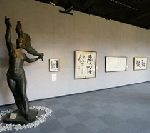
This museum aims to become a distinctive museum in a small village, and has 2600 pieces in its collection. Totenko, bronze sculpture, by Matsumura Sotojiro (1901 – 1990), is a representative work of this museum.-“Let’s sound our voice in the morning sun, like Totenko.” : Totenko means the voice of a chicken crying in the dawn. When Sotojiro was 33 years old, in 1933, he went to Paris to study under Antoine Bourdelle (1861 – 1929), who was the great master sculptor. After returning to Japan, he continued to say that the spirit of sculpture is the structure. Shinshu Shinmachi Town, Nagano City, where this museum is located, is at the northern part of the Fossa Magna, the 6,000 meter deep land fissure created at the border of the Eurasia and the North American continental plates, 20 Million years ago. It was at the Japanese Sea floor, 5 ‒ 4 Million years ago and sea floor fossils were excavated.

The Sakai family in Matsumoto was a wholesaler of paper during the Edo period (1603 – 1868). They loved calligraphy and antiques. The Sakai family actually interacted with Katsushika Hokusai (1760 – 1849) and Utagawa Hiroshige (1797 – 1858), Japanese artists of Ukiyo-e painting and woodblock printing. Both drew city pleasures and travel using woodblock prints and painting.
You can see Japan’s proud Ukiyo-e, including “Fugaku Sanjurokei, Thirty-six Views of Mt. Fuji” a woodblock printing series produced during 1830 – 1832 by Katsushika Hokusai, and “Tokaido Gojusan Tsugi, Fifty-three Stations on the Tokaido, the route connecting Kyoto and Edo Tokyo in the Edo period,” a woodblock printing series by Utagawa Hiroshige.
There are about 100,000 works in the Ukiyo-e collection at this museum, collected over the five generations of the Sakai family, spanning 200 years. Matsumoto is located at the top of the Japan archipelago, where, through Union-e, you can experience the days when people looked out at Japan.
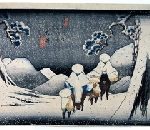
This museum possesses 121 pieces of Hatsuri, first print and Gosuri, second print of Ukiyoe, Japanese woodblock prints, of Nakasendo Rokujukyu Tsugi. The 69 post towns of the Nakasendo, the main road inland between Edo, Tokyo and Kyoto in the Edo period (1603 – 1868), which is the Soroimono, series of the same theme.
Magomejuku, a post town, is a former Yamaguchi Village in Nagano Prefecture, and currently in Nakatsugawa City, Gifu Prefecture. Magomejuku is the southernmost post town of Kiso Juichishuku, 11 post towns in the Kiso district on Nakasendo. It was the hometown of Shimazaki Toson (1872 – 1943), a Japanese author, who wrote” Before the Dawn” as the model of Magomejuku.
The entire post town is formed along the ridge of the mountain, and there are many steep slopes. But the view of Mt. Enasan is as beautiful as the Ukiyoe by Utagawa Hiroshige (1797 – 1858), artist of Japanese ukiyo-e, paintings that depicted city pleasure and travel, using woodblock prints and painting.
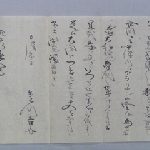
Nakatsugawa post town of Nakasendo Rokujyukyu Tsugi, Sixty-nine stops on the Nakasendo, the route connecting Kyoto and Edo in the Edo period, was a Shogun demesne, which was a midpoint between Edo and Kyoto. Fusetsu dome, a memo collection of hearsay, was left behind at this important post town.
This historical material mentioned the appearance of the procession of Princess Kazu (1846 – 1877), the wife of Tokugawa Iemochi (1846 – 1866), the 14th Shogun of Tokugawa Shogunate, in the Kazunomiya Koka, the marriage of Princess and Shogun, as an integration of the court and the shogunate. It addresses the classified action of Sakamoto Ryoma (1836 – 1867), a low ranking samurai from Tosa Domain, who influenced the Meiji Restoration, the establishment of the Empire of Japan, after Saccho Meiyaku, the Confederacy of the Satsuma Domain and the Choshu Domain.
It also contains stories of the Arrival of the Matthew C. Perry (1794 – 1858), a Commodore of the United Sates Navy, who played a leading role in the opening of Japan. It mentions a volcanic eruption, an earthquake, and the conflict between the Shogunate and the Choshu Domain.
Fusetsu dome shows that the merchants to visit this post town knew well those political situations under the mess in the End of the Edo period (1603 – 1868).
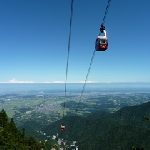
The Mie river drawn at Yokaichi Miegawa, from the Ukiyo-e series “Fifty-three Stations of the Tokaido (the route connecting Kyoto and Edo Tokyo in the Edo period)” was the Mitaki River. The river was originated from Suzuka Montains, where ancient granite appears as huge and uniquely-shaped rocks. It was named after three waterfalls near the headstream.
One of them, Aodaki, the blue waterfall, has a 50 meter drop, and the water flows vigorously on a huge granite rock surface 10 m wide. And it glows blue, as the name implies.
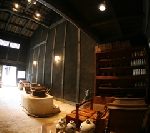
Seki post town, was the forty-seventh of the Fifty-three stops on the Tokaido, the route connecting Kyoto and Edo Tokyo in the Edo period. It was the post town that crossed the Isebetsu Kaido, a route to Ise Province Mie, from east Oiwake, forked road, and to Yamato Kaido, a route to Nara, from west Oiwake. It was a vibrant post town.
Chokan-tei in Hyakurokuri-tei, park is located in Hyakurokuri, 106 ri, (a Japanese unit of distance) or 416.2km from Edo and in the center of this post town. It has a panoramic view of Seki post town’s houses.
O-Hatago, a large inn, Tamaya, was restored as valuable Hatago architecture from the Edo period, and was transformed to the historical museum, to exhibit Ukiyoe, Japanese woodblock prints, by Utagawa Hiroshige (1797 – 1858), artist of Japanese ukiyo-e, who depicted the city pleasure and travel by woodblock prints and painting.

This museum tells the history of Tomonoura, which was a port for awaiting a favorable tide and wind, since ancient times. This port was described in Manyoshu, the 8th century anthology of Japanese poetry, and was an important military base to maintain the supremacy of the Ashikaga clan, which was established by the Muromachi Shogunate and ruled Japan during the medieval days of 1366 – 1573.
This port was a port of call of Kitamae-bune, cargo ships that sailed the Japanese Sea during the Edo period (1603-1868) in the early modern times. At that time, Chosen Tsushinshi, Envoys from Korea for Building Peace and Cultural Exchange between Korea and Japan from the 17th to 19th century, and Ryukyu Shisetsu, mission from the Ryukyu Domain to Edo, visited this port for diplomatic visits to the Tokugawa Shogunate in Edo.
Rai Sanyo (1781 – 1832), a Japanese Confucian scholar, historian and Imperialist who supported emperor-centered nationalism came here at the end of Tokugawa Shogunate period, to rely on Tomo’s merchants. Sanjo Sanetomi (1837 – 1891), Imperial court noble and grand minister of state in the Meiji Restoration, stopped over here in the exile of the Seven Nobles from Kyoto, in the end of the Edo period (1603 – 1868).
At that time, Sakamoto Ryoma (1836 – 1867), a low ranking samurai from Tosa Domain, who influenced the Meiji Restoration, the establishment of the Empire of Japan, negotiated here with the Kishu Wakayama Domain, when an Irohamaru sailboat was sunk by the boat of the Kishu Wakayama Domain.

This museum appears in the Medieval style image, which is Irimoya Zukuri style building, the building with a hip-and-gable roof structure. It is at the site of the village headman’s residence and has roofing with copper-plates and stone walls. The center of the collection is the work of Tomioka Tessai (1836 – 1924), a Japanese painter and calligrapher, who was the last painter of the literary school in the End of the Edo period.
Tessai read many books and traveled to places far away. Buryo Togen-zu, his painting of earthly paradise, found by a fisherman from Buryo in China, after losing his way. That painting has the elegance of poetic unconventionality.
This museum possesses the western style painting of Kojima Trajiro (1881 – 1929), and Bizen ware of Kaneshige Toyo (1896 – 1967), who was a potter and a living national treasure.

Four ships of the 16th envoy to Tang Dynasty (618 – 907), entered the cove of Fukuejima island as the last port of call in Japan in 804 and prepared to cross East China Sea for the Tang. Two ships succeed in crossing the sea, which Kobo Daishi Kukai (774 – 835): the founder of the Shingon sect, and Saicho, Dengyou Daishi (767 – 822): the founder of the Buddhist Tendai sect, were on board.
Tamaura in this island welcomed Kukai returned safely, where Shirobukurin, a white colored rim of Camellia japonica Tama-no-ura, was born by the mutation. It is said that beautiful camellia that were not discovered are still here.

The Kuma River is the largest river in Kumamoto prefecture. It flows from the Yatsushiro Plain to the Yatsushiro Sea, and has three major rapids in Japan. The 90 minute Kumagawa River Boat Ride from Hitoyoshi to Kyusen Cave, introduces the history of overcoming difficulties in water transportation, on site.
Sagara Yoritaka (1664 – 1703), the 3rd lord of Higo Hitoyoshi Domain, worked on this river development, in the Kanei era(1624~44)in the Edo period, and his uncle from Tanba Sasayama Hyogo, which had a history of developing the Hozugawa Gorge, worked on the Kuma River excavation project.
